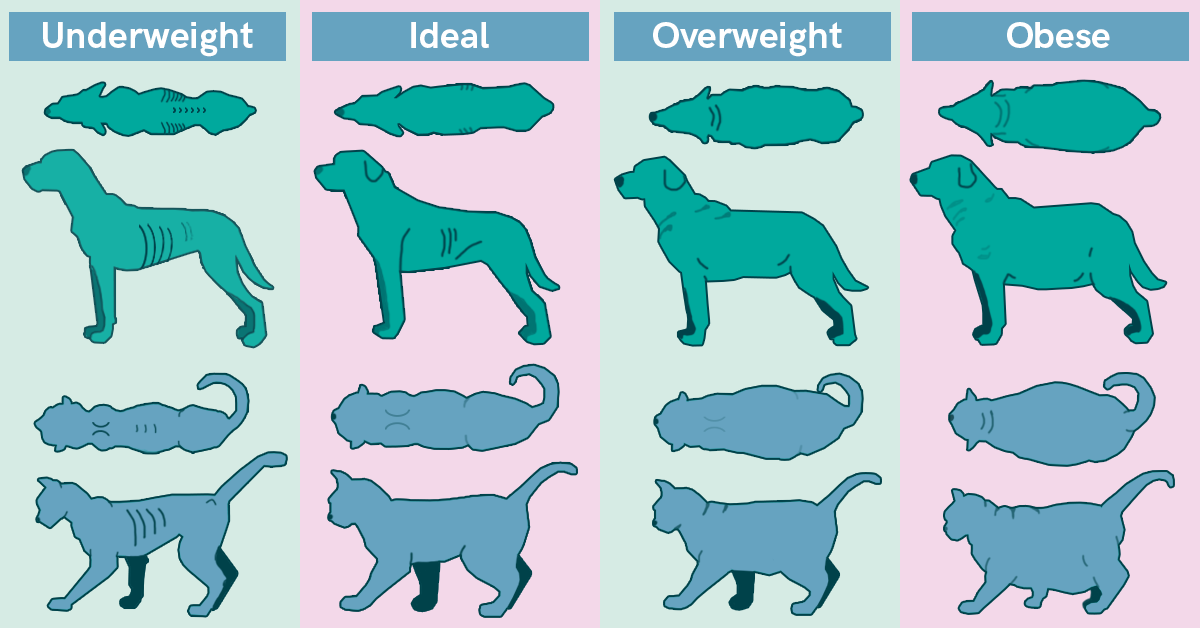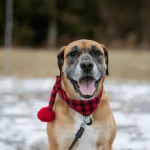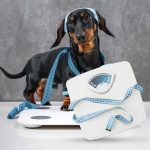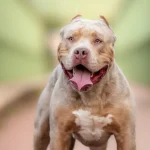
Body Condition Scoring is a technique that vets and vet nurses use to determine whether or not a pet is a healthy weight. It is fairly easy to do at home without the difficulty of weighing your pet.
When pets are overweight it increases their risk of:
- Diabetes
- Heart disease
- Joint disease including arthritis
- Problems during anaesthesia and surgery
Also, there is strong evidence in dogs that being overweight reduces life expectancy.
The Ideal weight for a dog from WSAVA
- Ribs, spine, pelvic bones and bony lumps are visible from a distance. No visible body fat. Obvious loss of physique.
- Ribs, spine and pelvic bones easily visible. No physical fat. Some evidence of other bony lumps. Minimal loss of figure.
- Ribs easily visible and may be visible with no physical fat. Tops of lumbar vertebrae visible. Pelvic bones becoming prominent. Obvious waist and abdomen obviously tucks up towards the groin.
- Ribs easily visible, with minimal fat covering. Waist easily seen when viewed from above. abdomen obviously tucks up towards the groin.
- Ribs visible without excess fat. Waist observed behind ribs when viewed from above. Abdomen tucked up when viewed from the side.
- Ribs visible with slight excess of fat. Waist is visible when viewed from above but is not prominent. Abdominal tuck apparent.
- Ribs visible with difficulty; heavy fat cover. Noticeable fat deposits over lower back and base of tail. Waist absent or barely visible. May be able to see where the abdomen tucks up towards the groin.
- Ribs not visible under very heavy fat cover. Heavy fat deposit over lower back and base of tail. Waist absent. No abdominal tuck. Larger abdomen may be present.
- Massive fat deposits over chest, spine and base of tail. Waist and abdominal tuck absent. Fat on neck and limbs. Large abdomen.
The Ideal weight for a cat from WSAVA
- Ribs visible on shorthaired cats. No visible fat. Severe abdominal tuck. Spine and pelvic bones or hip bones easily visible.
- Ribs easily visible on shorthaired cats. Spine obvious. Distinct abdominal tuck. No visible fat.
- Ribs easily visible with minimal fat covering. Spine obvious. Obvious waist behind ribs. Minimal abdominal fat.
- Ribs visible with minimal fat covering. Noticeable waist behind ribs. Slight abdominal tuck. No Abdominal fat pad (saggy tummy below abdomen).
- Well proportioned. Can see waist behind ribs. Ribs visible with slight fat covering. Abdominal fat pad minimal.
- Ribs visible with slight excess of fat. Waist and abdominal fat pad distinguishable but not obvious. Abdominal tuck absent.
- Ribs visible with difficulty; moderate fat cover. Waist barely visible. Obvious rounding of abdomen. Moderate abdominal fat pad.
- Ribs not visible under excess fat cover. Waist absent. Obvious rounding of abdomen with prominent abdominal fat pad. Fat on the lower back.
- Ribs not visible under heavy fat cover Huge fat deposits over lower back, face and limbs. No waist visible. Lots of fat around the abdomen.
Here are 3 really simple steps you can follow to check your pets. (We’ve also included a helpful video)
- Feel the ribs (should be able to feel them easily)
- Feel the waist (should go in at the waist)
- Feel the tummy (should tuck upwards towards the groin)





